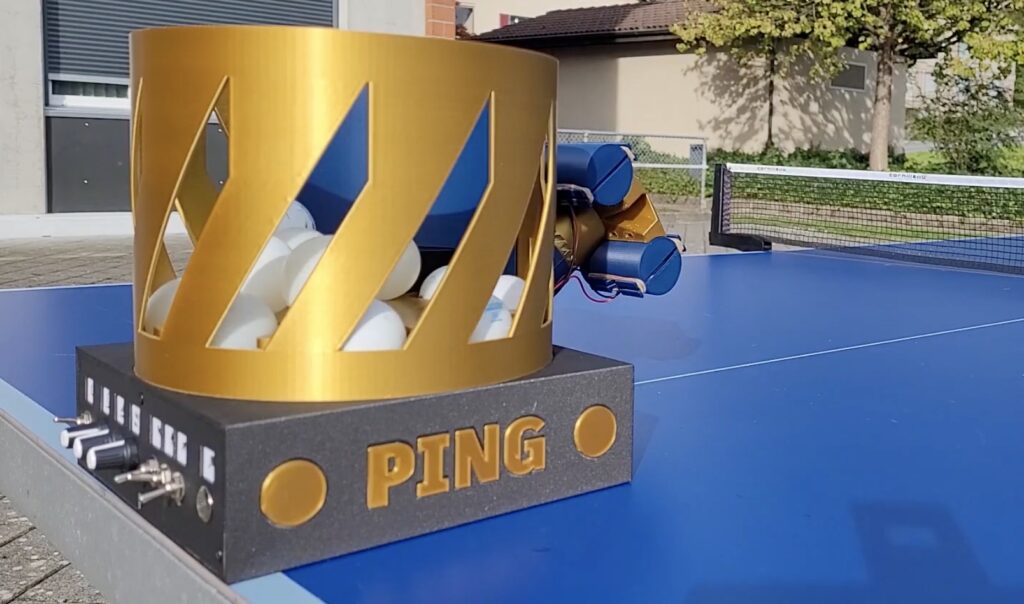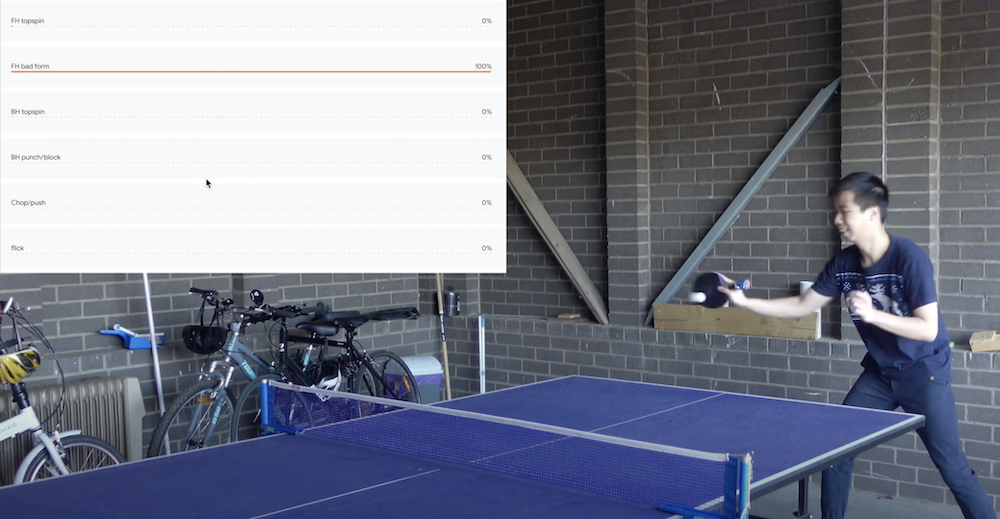09

Ping pong is one of the most popular sports in the world, but that doesn’t mean that it is easy to find people to practice with. Lone players are typically forced to practice by using return boards (or one half of the table flipped up), but that is overly predictable. To provide a better training experience, BINGOBRICKS designed this ping pong robot that serves balls according to user preferences.
This is a bit like a tennis ball serving machine, but tailored to the particular quirks of ping pong. Through a control panel on the back of the robot, the user can set the serve parameters. Those include the direction of the serve and even the spin of the ball — anywhere from a full top spin to a full back spin. A quick launch tube swap lets the user switch between high ball releases or low ball releases. To keep the player on their toes, the machine can release balls in different directions throughout a session.
Most of the robot’s body and mechanical parts are 3D-printable. An Arduino Nano board controls the motors according to the parameters set by the switches and dials. Potentiometers allow adjustment for the intervals between serves, speed, and spin, while three toggle switches control the directions in which the robot will serve balls. A servo motor controls the angle of the launch tube, a pair of DC motors spin the launch wheels (their relative speed sets the ball spin), and another DC motor rotates the hopper’s feed arm.
The post Ping pong robot lets you dial-in the serves appeared first on Arduino Blog.





